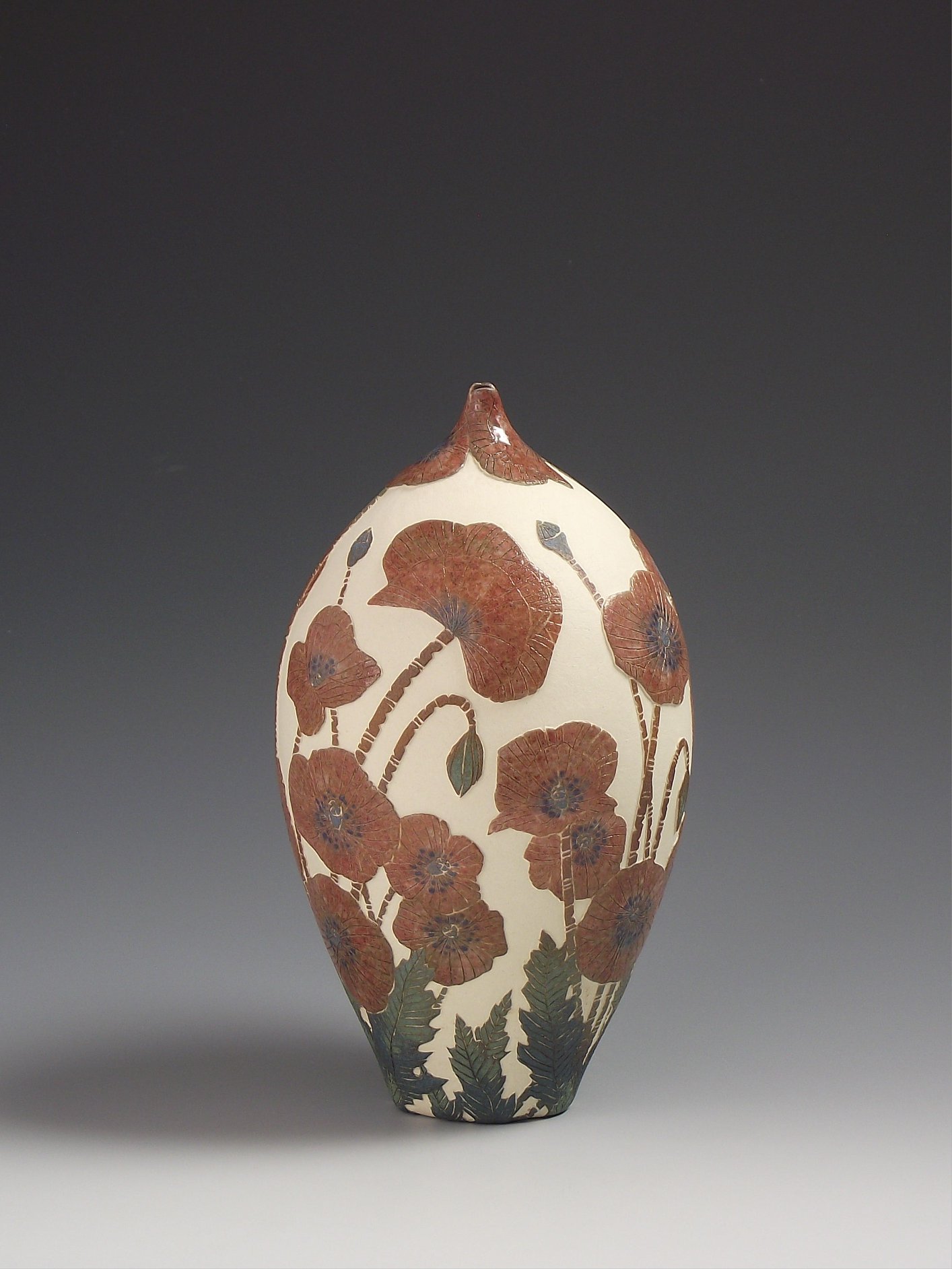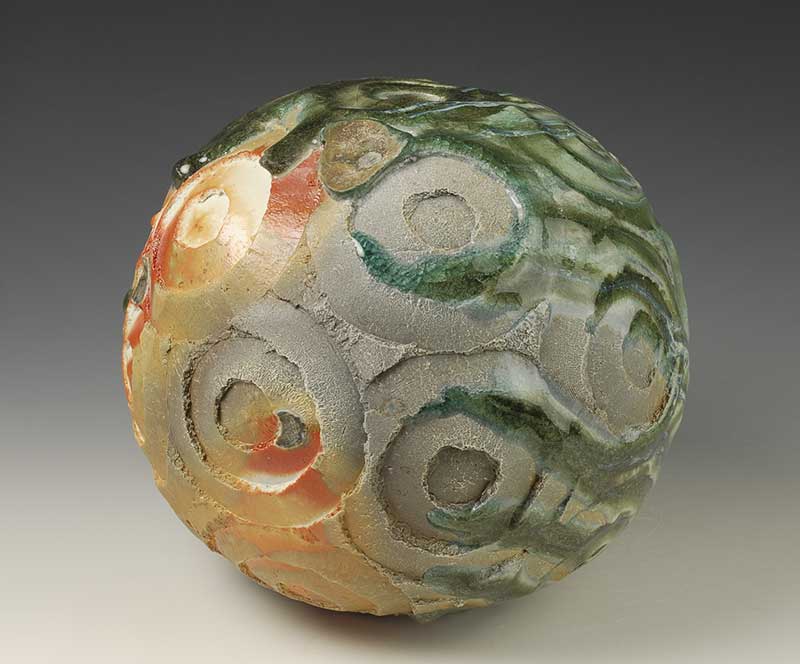It is looked down upon by many in the pottery and ceramics industry that people still directly copy other artists’ unique and developed pottery styles, although many may argue of course that these people can never truly replicate an artist’s unique signature style in their own. However, with respectable arguments on both sides, it is safe to say that there is strong views and experiences on the matter. With many emails and responses to this question on Facebook, we too have pondered upon the role of copycats with a number of insightful accounts from across our membership. Have you had an experience of this in the past? How did you get round on this? What would you advise others to do to protect themselves from copycats? Here are some of the responses from the CPA community:
Associate member Melanie O’Hanlon:
“Once your work is in the public domain there is always the chance that someone may choose to ‘copy’ your work/style. A person can always ‘copy’ your work/style but it will never contain your essence, your own unique blueprint that has gone into and is part of your work. It is important we never ‘fear’ the copycat, for that is all they can do, copy, they can never steal your unique blueprint, your true essence that makes your work unique and YOURS.”
[In response] Selected member John Christie:
“I agree. Copying is never a very good idea. Even copying one’s own work is usually a mistake resulting in work which is of the head rather than the heart.”

Vase by Selected member Tiffany Scull
Associate member Diane Marshall:
“You can copyright a design, I have done it with an artist brush pot, registered with the patent office. I did this in case I want to licence the design as I can’t produce many myself.”
[In response] Associate member Melanie O’Hanlon:
“I remember recently seeing a piece of work by an artist that closely resembled something I had done at university. There is no way this artist would have seen my work yet they produced something very similar but a different message. I also saw this again with some paper clay experiments I had been doing, an artist appeared in ceramic review who’s work again resembled what I had been doing. I in no way believe either artist copied my work as it was impossible for them to have seen it. Fascinating to see and wonderful work they produced. Maybe we are more connected than we realise “
[In response] Associate member Diane Brewster:
“Agreed. Go to any art gallery and there will be exhibitions with themes like “surrealism“ “the pre raphaelites” etc. Movements and styles emerge in a variety of ways, often because of a reaction to what’s gone before. Someone might think they are being totally original and innovative but they’ve picked up something in the mood of the age. I see lots of ceramic art ATM that draws on natural forms and looks similar, it doesn’t mean there is copying occurring. (You can patent designs – but you have to convince the parent office that what you have designed is significantly different to anything that has gone before).You just have to do what you do really well and make sure you have a distinctive mark. I Have some yunomi I made, similar in the way they are glazed and soda fired to a Lisa Hammond one I bought. There’s a world of difference, aesthetically, between them!”
[In response] Associate member Anton Todd:
“Maybe we are more connected than we realise. It takes a rare person indeed to be creative, original and not connected. My favourite quote came from Bernard Pearson who told me: “…after all we all sit on the banks of the same river.”

Ceramic Sculpture by CPA Fellow Matthew Blakeley
CPA Fellow Ben Arnup:
“Its vain to think someone will fake your making.”
Selected member Mandy Cheng:
“Make it hard to copy. Then it will be your very unique style.”
Selected member Claudia Clare:
“I sometimes wish more potters would ‘copy’ me if that’s even possible. I’d love to be part of a mature, recognised, and well understood genre. Alas we potter-painters are few – fewer still if you take “painter” to mean figurative/representational painting, which I do. I’m not talking about pattern-makers. They’re a different thing. So don’t bother protecting your work. If others emulate [your work], be happy about it and celebrate. Its an honour. Being an odd ball, out on a limb, isn’t actually that much fun.”
Associate member Kelly Morris:
“Imitation is the sincerest form of flattery.”
Selected member Jonathan Chiswell-Jones:
“We all learn by copying and by the generosity of those who went before us. This idea that we must protect ourselves from others copying ’our’ ideas is against the spirit of generosity which I was bought up with and which I believe most craftsmen naturally incline to. It belongs to ‘artists’ frightened that what they claim as theirs (regardless of where they stole their idea from) is going to be used to better effect by someone else. Good luck to them I say. If anyone wants to copy my work, I wish them well. It has taken 17 years to get where it is and I know how hard the work has been. No-one who is not dedicated to their craft could imitate this work. If they are dedicated they will probably want to do something for themselves rather than make copies. What can be copied easily is perhaps a gimmick which somebody is laying claim to. If you work with integrity and with conviction and with skill, that cannot be copied except by those who have those qualities.
I would also like to question those who believe their work to be unique. [It is] more than likely they have simply hidden their sources. Does that make their work original and, if it were, does that make it of greater value? By what right do they lay claim to their particular mix and what are they frightened of? There are fewer new ideas than we might suppose and honest craftsmen need not be ashamed of admitting their debt to others, to a tradition, to the multiple sources which have fed them.”
In summary
Concluding, copycats are often seen as one of the problems of being an artist. While makers continue to develop their own unique approaches to designing pottery, there will of course be those who choose to follow and base their styles on the styles of others. Perhaps we could therefore better learn how to inspire and teach others to formulate their own styles and to evolve and develop these further, rather than to directly copy the idea and processes of another artist. On the other hand, as Jonathan Chiswell-Jones discusses, is it even possible not to copy the work of another, even if indirectly or by accident?
Article by Tommy Tran
© Craft Potters Association 2018
If you’re a ceramic artist still looking to find your own ceramic signature style then go to our blog post exploring this theme here.
At the Craft Potters Association we encourage creativity and the development of our members’ work as an exciting community of makers, collectors and all round ceramics enthusiasts from across the UK and internationally. If you’re a current CPA member, have Facebook and haven’t yet joined the group then click HERE to get involved in all our conversations. For those who haven’t a Facebook account, we’ll be posing questions to our members in our Friday e-newsletter also, so feel free to get in touch on any of ours or members’ questions with your knowledge and experience via Facebook or email.
If you’re not a CPA member yet and would be interested in joining click here to navigate to the Associate Membership information page.

